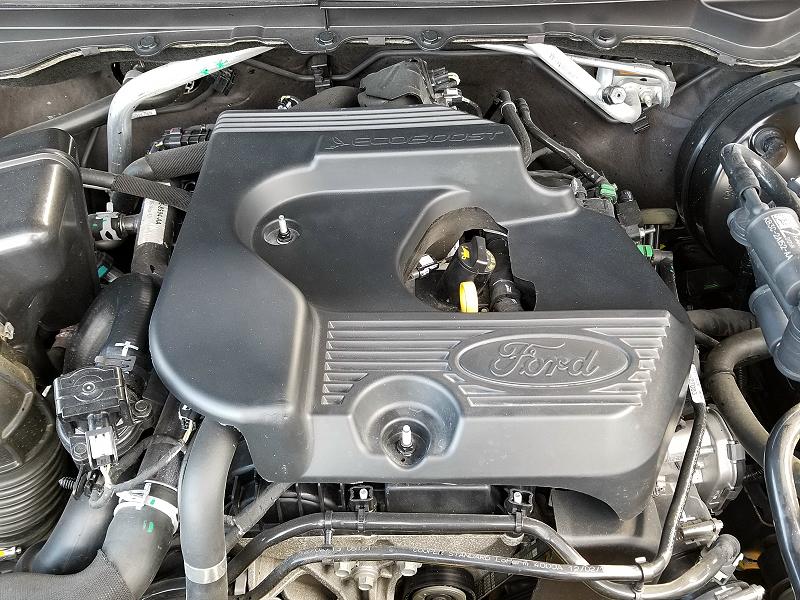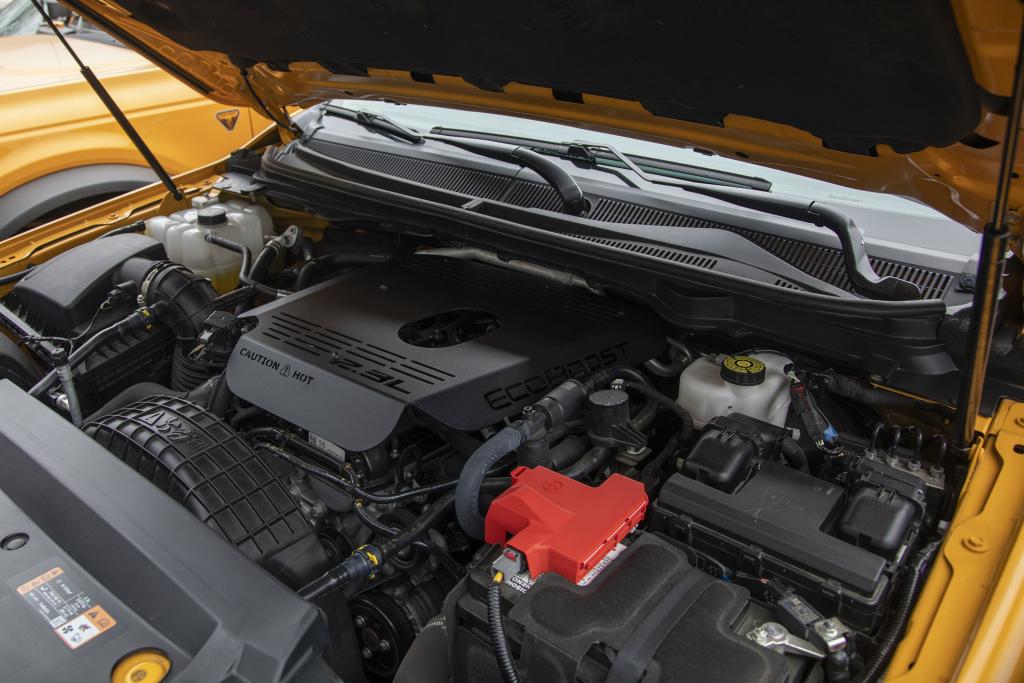How to Maintain and Optimize the 2.2 Ford Ranger Engine for Long-Lasting Performance
How to Maintain and Optimize the 2.2 Ford Ranger Engine for Long-Lasting Performance
Blog Article
Recognizing the Basics of Auto Engines: Types, features, and features

Overview of Auto Engines
An automobile engine acts as the heart of a lorry, converting fuel into mechanical energy to push it forward. This detailed system comprises various parts that operate in unison to make certain optimal efficiency and performance. The basic procedure of an auto engine includes the internal burning process, where gas and air are combined, ignited, and eliminated to produce power.
The engine's design can considerably impact its efficiency, fuel effectiveness, and emissions. Trick components include the cylinder block, pistons, crankshaft, and camshaft, each playing an essential role in the engine's general feature.
Along with these components, engines frequently make use of numerous systems such as gas injection, ignition, and cooling systems to boost efficiency and durability. Recognizing the basic technicians of vehicle engines is crucial for carrying out and identifying problems upkeep, inevitably adding to the car's dependability and efficiency over time.

Kinds of Vehicle Engines
Vehicle engines can be categorized right into a number of kinds based on their layout, fuel kind, and operational concepts. 2.2 ford ranger engine. One of the most usual classifications include interior combustion engines (ICE), electrical engines, and hybrid engines
Interior burning engines, which can be additional divided right into gasoline and diesel engines, operate by igniting a fuel-air combination to generate power. Gasoline engines are normally lighter and smoother, while diesel motor are extra fuel-efficient and offer greater torque.
Electric engines use electrical power kept in batteries to power an electric motor, providing immediate torque and zero emissions during operation. As modern technology developments, electric vehicles (EVs) are progressively ending up being preferred for their environmental benefits and lower running prices.
Crossbreed engines integrate components of both interior burning and electrical engines, allowing for versatile source of power and boosted gas effectiveness. They can run in numerous modes, making use of either the gas engine, the electrical motor, or both concurrently.
Each sort of engine has distinctive benefits and drawbacks, affecting their application in various automobile types and market segments, from compact autos to durable trucks. Recognizing these types is important for making informed decisions regarding lorry option and efficiency expectations.
Engine Functions Discussed
Understanding engine features is vital for realizing how automobiles run effectively. At the core of any type of interior combustion engine lies the fundamental process of converting fuel right into power. This procedure starts with the consumption stroke, where air and fuel are attracted right into the combustion chamber. Following this, the compression stroke presses the air-fuel mix, boosting its temperature and pressure.
The ignition takes place following, stiring up the mix and producing a rapid expansion of gases. This pressure drives the piston down throughout the power stroke, which eventually equates into the rotational movement of the crankshaft. The exhaust stroke after that gets rid of the invested gases from the chamber, giving way for a new cycle to commence.
In addition to these key functions, engines additionally incorporate systems that take care of cooling and lubrication, making sure ideal functional temperature levels and minimizing rubbing in between relocating parts. This detailed interaction of features allows the engine to produce the power necessary for automobile propulsion while keeping effectiveness and dependability. Comprehending these features supplies useful insight into the intricacies of automobile engineering and enhances the capability to detect and address engine-related problems properly.
Secret Engine Functions
Engine design encompasses a number of vital features that considerably affect performance, performance, and resilience. Among the most important facets is the engine setup, that includes inline, V-type, and level styles. Each configuration impacts the engine's equilibrium, power, and dimension output, therefore influencing general vehicle dynamics.
Another vital function is the engine displacement, referring to the overall quantity of all cyndrical tubes. Larger variations normally generate even more power yet may jeopardize fuel effectiveness. Engine products additionally play a critical duty; high-strength and light-weight materials, such as light weight aluminum and magnesium alloys, improve performance without including too much weight.
The type of fuel injection system used-- such as multi-port or direct injection-- impacts burning efficiency and emissions. Supercharging and turbocharging are attributes that improve engine efficiency forcibly additional air right into the combustion chamber, boosting power output without significantly raising engine size.
Lastly, the existence of sophisticated engine monitoring systems enhances fuel-air combination and ignition timing, contributing to smoother operation and far better gas economic climate. Jointly, these features define an engine's capabilities, setting the foundation for its performance and longevity in a competitive automotive landscape.
Maintenance Tips for Engines
Correct engine upkeep is crucial for guaranteeing ideal efficiency and long life, as neglecting routine treatment can cause Web Site considerable concerns down the line. To maintain your engine effectively, start with regular oil modifications, generally every 3,000 to 7,500 miles, depending on the sort of oil utilized. Fresh oil lubes engine elements, minimizing rubbing and wear.
Additionally, monitoring coolant levels is crucial to stop overheating. Make certain that the coolant is covered up and is in good condition to preserve reliable temperature guideline. On a regular basis change and inspect air and fuel filters, as clogged filters can hinder airflow and gas my explanation delivery, compromising engine efficiency.
Additionally, take notice of ignition system and ignition systems. Worn or damaged stimulate plugs can lead to misfiring and lowered performance. Inspecting the battery terminals and connections for corrosion is additionally essential, as a weak battery can affect engine beginning.

Verdict
In recap, a thorough understanding of automobile engines incorporates different types, functions, and key attributes that substantially affect automobile efficiency. Interior burning engines, check out here in addition to electric and hybrid alternatives, show diverse mechanisms for energy conversion. 2.2 ford ranger engine. Acknowledging the crucial functions, such as consumption and exhaust cycles, together with crucial engine functions like arrangement and gas shot systems, gears up automobile proprietors with the knowledge required for effective upkeep and operation, eventually enhancing automobile durability and performance
An automobile engine serves as the heart of a vehicle, converting gas right into mechanical power to move it ahead. The essential operation of a vehicle engine entails the interior burning procedure, wherein gas and air are mixed, stired up, and gotten rid of to produce power.
Frequently check and change air and fuel filters, as clogged filters can impede air flow and fuel distribution, endangering engine efficiency. - 2.2 ford ranger engine
In summary, a comprehensive understanding of cars and truck engines incorporates various kinds, functions, and essential functions that dramatically influence lorry performance. Recognizing the necessary functions, such as intake and exhaust cycles, along with essential engine functions like configuration and gas shot systems, furnishes vehicle proprietors with the expertise needed for efficient maintenance and operation, ultimately improving car durability and performance.
Report this page